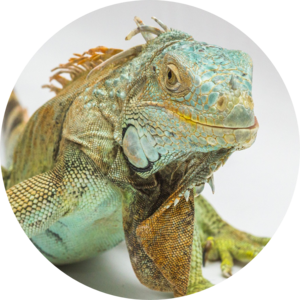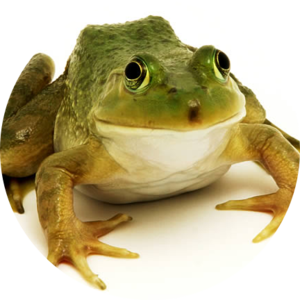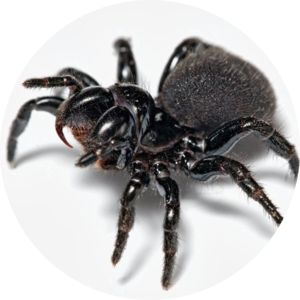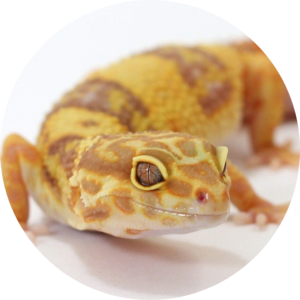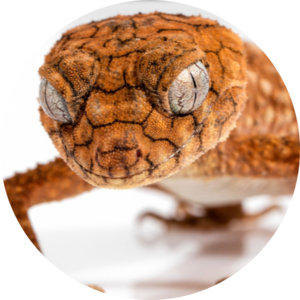About Your Freshwater Fish
LIFE SPAN:
3-10+ years depending on species
AVERAGE SIZE:
1” to 12” + depending on species
WATER TEMPS:
Tropical fish - 76-78 ℉
Goldfish/koi - 65-72 ℉
WILD HISTORY:
With the exception of goldfish and koi, the majority of freshwater aquarium fish come from tropical to sub-tropical regions of the world. Depending on where they come from, freshwater aquarium fish will require different water parameters. Size and temperament can vary considerably between fish as well, even between fish found in the same part of the world. See the listing at the end of this care sheet to guide your choice and combination of fish for your aquarium. Many commonly kept species are now bred in captivity while others are still wild caught. To help reduce the number of fish collected from the wild, try to buy captive bred fish whenever possible.
PHYSICAL CHARACTERISTICS:
Freshwater aquarium fish come in a variety of shapes, sizes, and colors. They all share basic physical characteristics such as gills used for breathing, a lateral line organ on their side to sense vibrations (look closely!), and fins for moving around their environment.
NORMAL BEHAVIOR & INTERACTION:
Most fish are diurnal, or most active during the day, though some species are nocturnal, or most active at night. The majority of catfish are nocturnal though many learn to come out during the day when fed!
NOTE: Many fish can be housed together in “community” aquarium setups. However, there are many that do not get along well with each other or grow large enough to eat their tank mates! The section at the end of this care sheet will provide some basic information on keeping different species together.
DIET:
Aquarium fish vary in their dietary requirements. The majority of fish are either carnivores or omnivores with a few species being herbivores. Research the type of fish you want before buying it to determine its dietary requirements. Many commercial diets are available that tailor to specific groups of fish, as well as diets that are acceptable for a wide variety of fish (e.g. tropical fish flake food, cichlid pellets, spirulina flake food, algae discs). The following groups of fish benefit from receiving a high amount of vegetable matter in their diet: Live bearing fish (mollies, guppies, platties, etc.) Goldfish and koi Most sucker mouth catfish (plecostomas, otocinclus catfish, algae eaters, etc.) Besides commercially available spirulina flakes and algae discs, the following fresh vegetables are good supplements for herbivorous fish: raw peas, lettuce (avoid iceberg lettuce), zucchini, and green beans Small carnivorous/omnivorous fish can be fed frozen foods such as brine shrimp, bloodworms, beef heart, or mysis shrimp. Larger carnivorous fish should be fed high protein commercial diets supplemented with high protein foods such as market shrimp, earthworms, clams/mussels, or frozen smelt/silversides. Feeding live “feeder fish” is NOT recommended as these feeder fish carry parasites and diseases that can be harmful to your pets.
FEEDING:
Most freshwater fish should be fed at least twice daily. The majority of their diet, about 75%, should be commercial pellet or flake food. The remainder of their diet should be frozen foods or vegetable matter for herbivorous species (see above). Larger carnivorous fish should be fed once daily while young and every other day to two to three times per week once fully grown. It is important not to overfeed your fish. Overfeeding leaves uneaten food to decompose in your aquarium. Decomposing food adds extra waste compounds to the water which in turn cause increased algae growth. All the food given should be completely consumed within 5 minutes. If a lot of food is left over after 5 minutes, cut back the amount fed.
RECOMMENDED SUPPLIES:
| Aquarium - these range in size from 5 gallons to over 100 gallons! | Light and hood - most aquarium lights are fluorescent strip lights. Aquarium hoods should fit snugly to prevent fish from jumping out. |
| Aquarium heater - either a hang-on-the-side or submersible variety is acceptable. | Thermometer - to monitor the aquarium’s temperature. |
| Filter - The filter should be large enough to handle the size tank and number of fish in the tank. | Gravel and tank decorations - A 1-2 inch layer of gravel is recommended for most tanks. |
| Water test kit - necessary to ensure proper water quality. | Air pump, airline hosing, and airstone - required to make sure water is well oxygenated. |
HOUSING & ENVIRONMENT:
ENCLOSURE SIZE: The enclosure should be a solid glass or acrylic aquarium. Aquariums vary from 5 gallons to over 100 gallons. The size aquarium depends on the fish being kept. An old rule of thumb used to be “one gallon per inch of a fish’s mature size”. This rule only works for medium sized fish. Small schooling fish such as tetras and barbs can be kept in more crowded conditions while larger fish need to have more space per fish. A good example would be a 10 gallon community aquarium housing 10-12 small schooling fish, 3-4 small catfish, and an algae eater. A tank holding larger fish, such as an oscar cichlid (pictured on front page), a large catfish, and an algae eater would have to be a minimum of 55 gallons for just these three fish. For larger fish, the front to back depth of the tank should be 1.5 times the mature/full grown length of the fish. Remember to check the mature or full grown size of a fish before you buy it. Baby fish, like oscar cichlids, are very cute but grow to become 12 inch long tank busters! Remember: IT IS NOT TRUE THAT A FISH WILL ONLY GROW AS LARGE AS ITS AQUARIUM!!
AQUARIUM SETUP: Once you have set up your aquarium, the system needs to cycle. Cycling refers to the nitrogen cycle within the aquarium. Fish produce waste as ammonia. Beneficial bacteria convert toxic ammonia into slightly less toxic nitrites and finally nitrates. Nitrates are non-toxic except in very high concentrations. When you first set up an aquarium, these beneficial bacteria are not present and the ammonia level will rapidly increase. As the first type of good bacteria becomes established, ammonia levels drop and nitrites rise rapidly. As the second type of good bacteria becomes established, nitrite levels drop and nitrates rise gradually. Water changes remove these accumulated nitrates. This entire cycle, from ammonia spike to gradually increasing nitrates, takes roughly 1-2 months and may produce some transient cloudiness in the water. For this reason, it is important to buy only a few fish at first: 5 or less. After the first month, once the nitrogen cycle is nearly established, it is OK to add a few fish at a time until your aquarium is fully stocked. NEVER BUY ALL YOUR FISH AT ONCE FOR AN AQUARIUM. YOU RISK CAUSING A TOXIC AMMONIA OR NITRITE SPIKE WHICH CAN KILL ALL THE FISH!
FILTRATION: The filter is one of the most important pieces of equipment in an aquarium setup. Filters remove solid fish waste, remove dissolved chemicals from the water, and provide surface area for beneficial bacteria that detoxify harmful waste compounds in the water. There are many types of filters, from hang-on-the-side to canister filters to sponge filters. The most important aspect of picking the right filter is making sure the filter is rated to the size aquarium you have. This information will be on the filter packaging. It is always better to over-filter an aquarium than under-filter. Additionally, larger fish require larger filters for the same size aquarium - they produce a proportionately larger amount of waste.
AERATION: An air pump, airline hosing, and airstone are required to provide oxygenation to the water. Air pumps are sold based on the size aquarium they are used for.
LIGHTING: Fish require a clear day/night cycle to do well. Since most freshwater aquarium fish come from tropical locations, the day night cycle should be as close to 12 hours on/12 hours off as possible. This is easily accomplished by buying a light timer. Keeping the lights on for more than 12 hours contributes to excess algae growth. Lighting comes in either fluorescent or incandescent fixtures. Fluorescent fixtures are better for aquariums containing live plants.
GRAVEL AND DECORATIONS: Which gravel and tank decorations are used largely depends on personal preference. Gravel comes in many different sizes and colors. Keep in mind that smaller smooth gravel is best if you have fish that like to “root around” in the gravel in search of food. Examples of such fish include Corydoras catfish and loaches. If using gravel, rocks, or driftwood from outdoors, i.e. which were found outside somewhere, they need to be sterilized before using them in your aquarium. This is accomplished by boiling the items in a large pot of water for 20 minutes to 1 hour. If driftwood found outside is too large to boil, baking it in a low temperature oven (200F) for a few hours will also sterilize it. The wood must be monitored very closely/frequently as the baking process risks drying the wood out to the point where it can catch fire.
COVER: Make sure the aquarium has an escape-proof solid glass or plastic cover. It should fit snugly onto the tank and have an area in the back to cut out sections for the filter, heater, and airline tubing to enter.
TEMPERATURES: Aquarium temperatures should be monitored closely and kept at the temperatures listed at the top of this care sheet. An appropriately sized aquarium heater should be used to maintain proper temperature for your fish. Sudden drops in temperature should be avoided as they stress fish and weaken their immune systems.
WATER QUALITY: Water quality parameters are important to monitor. Changes in water quality can stress your fish and increase their susceptibility to diseases and parasites. Different groups of fish require different parameters to be happy. In general, Central American and Eastern African fish will require hard alkaline water, fish from Southeast Asia usually require neutral water with average hardness, and South American and West African fish require soft and acidic water. There will be exceptions to these generalities; research the type of fish you want to keep so you can provide the optimum water quality for them! The following water parameters are the most important to monitor. Pet stores or your exotics veterinarian who works with fish can test water for you.
pH: measures the acidity or alkalinity of water.
Ammonia: toxic to fish; it is excreted by fish and produced by decaying material (such as uneaten food).
Nitrite: toxic to fish; it is the first product of the nitrogen cycle.
Nitrate: only toxic in high concentrations; it is the end product of the nitrogen cycle, removed via water changes.
Alkalinity/Carbonate Hardness: measures the buffering capacity of your water/its resistance to pH changes.
General Hardness: measures the total hardness of your water.
ACCLIMATING AND QUARANTINING NEW FISH:
Acclimating and quarantining new fish are important topics to cover. Simply dumping fish into an aquarium with different water quality parameters from their current water can shock the fish’s system and sometimes even cause death. Additionally, new fish can carry parasites and diseases that your fish may not have. Introducing new fish can therefore cause a disease or parasite outbreak with your previously healthy fish. New fish should be quarantined in a separate aquarium for 4 to 6 weeks. If any disease or parasite problems arise during the quarantine process, your regular tank full of your other fish are not exposed. If such a problem arises, we recommend contacting your exotics veterinarian for help diagnosing and treating the problem.
There are two ways to acclimate fish. The first method is to float the bag containing the new fish in your aquarium for 15 to 20 minutes to equalize temperatures. At that point you can add a ½ cup to 1 cup of tank water to the bag (depending on the bag size). Wait another 15 to 20 minutes and then add another ½ to 1 cup of tank water to the bag. Repeat this cycle until you’ve added 4-5 times the original volume of water to the bag containing your new fish. At this point, catch your new fish out of the bag and release it into your quarantine aquarium. Discard the bag and water that the new fish arrived in. With the second method, dump the new fish and its water into a 5 gallon container (a clean bucket works well). Using airline tubing, start a siphon and trickle water into the bucket containing the new fish. After about an hour, or when the water volume in the bucket has more than tripled, you can net your new fish out of the bucket and introduce it to your quarantine tank.
HABITAT MAINTENANCE:
Water changes are the most important aspect of keeping happy healthy fish! A partial water change, up to 1/3 of the total water volume, needs to be done every two weeks to remove built up wastes and harmful dissolved compounds. The easiest way to do water changes is with a gravel vacuum. A gravel vacuum is a large diameter tube connected to thinner, longer tubing. A siphon is started with the waste water collected in a bucket or poured down the drain. The gravel vacuum sucks waste out of the gravel without removing the gravel itself. Replace removed water with dechlorinated water of the same temperature as the aquarium water. If using tap water, a commercial tap water conditioner must be used to remove chlorine and chloramines. Alternately, well water or spring water may be used to replace the removed water.
NEVER COMPLETELY EMPTY AND CLEAN AN AQUARIUM - YOU WILL REMOVE BENEFICIAL BACTERIA THAT DETOXIFY HARMFUL WASTE COMPOUNDS!
The media in an aquarium’s filter should be changed once a month to once every other month. Never change all filter media at once unless your filter uses single replaceable cartridges.
Spot clean your aquarium as needed to remove uneaten food and scrape algae from the walls of the tank.
SIGNS OF A HEALTHY ANIMAL:
Healthy fish have vibrant colors, smooth skin, and swim normally, with fins held away from the body. You may even notice courtship or display behavior between fish. Healthy fish will also have a voracious appetite, often learning to come to the front of the aquarium as you approach to feed them. We recommend routine water testing daily to weekly for a brand new aquarium setup and monthly for an established aquarium. Many pet stores or your exotics veterinarian who works with fish can test water for you. We also recommend a physical exam with an exotic pet veterinarian for pet fish if you notice a change in appetite, swimming, breathing rate, or if you notice sores/growths on the fins and/or body of your pet. Physical exams are done using reversible sedation at your exotic veterinarian’s office.
SIGNS OF ILLNESS:
For most conditions, see your exotic pet veterinarian, who can properly address the condition and treat your pet. Most diseases in fish cause identical symptoms - basing treatment on how a fish looks often leads to mis-diagnosis and inappropriate treatment for diseases and/or parasites.
SOME COMMON PROBLEMS INCLUDE:
| HEALTH ISSUE: | SYMPTOMS: | TREATMENT: |
|---|---|---|
| External Parasites | Rubbing on objects in the aquarium (flashing), small sores on the skin and fins, heavy breathing, clamped fins, white spots on the body | See an exotic pet veterinarian |
| Internal Parasites | White stringy feces, decreased appetite, thin stomach or swollen stomach, clamped fins | See an exotic pet veterinarian |
| Bacterial Infections | Decreased appetite, small sores on the skin and fins, rubbing on objects in the aquarium (flashing), swollen stomach, swollen eyes, clamped fins | See an exotic pet veterinarian |
| Fungal Infections | Decreased appetite, small sores on the skin and fins, white cottony growth on the skin, clamped fins | See an exotic pet veterinarian |
FISH COMPATABILITY:
*Fish marked “(schooling)” should be kept in groups of at least 5 to 6 individuals. Keeping these fish by themselves causes stress and an increased susceptibility to diseases.
Peaceful/Community Fish: This group of fish can easily be mixed together without any aggression or predation problems. This group of fish includes some of the hardiest and most easily kept fish, allowing you to keep groups of them in a smaller space than larger growing fish. Examples of these fish include: livebearers (mollies, platys, and guppies), small growing barbs, most tetras (schooling), rasboras (schooling), danios (schooling), white cloud mountain minnows (schooling), killifish, small growing catfish species such as corydoras (schooling) or hoplosternum catfish, algae eaters such as bristle nosed plecostomus or otocinclus catfish (avoid the common plecostomus as they grow very large and do not eat much algae once mature), certain dwarf cichlids such dwarf gouramis, and bettas.
Goldfish and koi are in this group of fish. You can mix and match most goldfish and koi varieties as long as a sufficient size tank or pond is provided. However, due to their cool water temperature requirements, it is not recommended to keep them with tropical freshwater fish. Larger cool water catfish such as bullhead or young channel catfish can be kept with koi and large goldfish.
** A note about bettas - bettas require warmth, light, and filtration just like any other tropical fish. While they may survive in a bowl with no supplemental heat or filtration, this is not humane unless water changes are done AT LEAST once weekly and the bowl is kept in a room that never goes below 72 degrees Fahrenheit. Bettas make wonderful additions to community tank setups so long as only one male betta is added to the aquarium. Male bettas will fight and injure each other if kept together. Bettas get along very well with other non-betta fish.
Semi-Aggressive Fish: This group of fish can be tricky to house together as they may get along well at times yet can be aggressive or territorial at other times. Often aggression and territoriality coincides with breeding or spawning behavior. Examples of these fish include many types of cichlids from Western Africa, Central America, and South America; larger barb species; and medium size catfish such as Synodontis or Pimelodella catfish.
Aggressive Fish: This group of fish can be hard to maintain without the fish picking on and injuring each other. Some species of aggressive fish are best kept by themselves. Others can be over-stocked in an aquarium to distribute the aggression evenly between all fish. Examples of these fish include many types of cichlids (especially East African cichlids from the Rift Valley lakes), certain larger catfish, and most freshwater/brackish water puffer fish.
Monster or Oddball Fish: This group of fish includes individuals that fit into each of the above three categories based on temperament. Most of them grow very large. They can be gentle giants or large aggressive predatory fish. Examples of these fish include freshwater stingrays, Polypterus/bichirs, arowanas, large catfish, giant gouramis, spiny eels, and gar. The most important thing to remember when keeping these fish is to provide a large enough and well-filtered aquarium.




